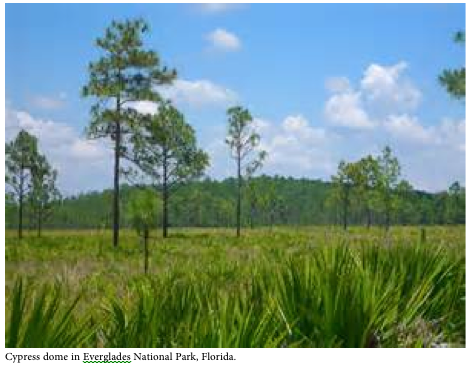Undergraduate Researchers Receive Oswald Awards
The University of Kentucky Office for Undergraduate Research has presented 17 students with the Oswald Research and Creativity Program awards.
The University of Kentucky Office for Undergraduate Research has presented 17 students with the Oswald Research and Creativity Program awards.
When University of Kentucky faculty need a piece of specialty glasswork designed, like laboratory instruments, they rely on the only scientific glassblower on campus, Jeff Babbitt.
At Kentucky’s recent 28th Annual Equal Employment Opportunity Conference, the Commonwealth’s Personnel Cabinet Secretary presented the annual Charles W. Anderson Laureate Award to Gerald L. Smith, associate professor of history in the University of Kentucky College of Arts and Sciences.
Thanks to a grant from the Council on Library and Information Resources, the UK Libraries Special Collections Research Center will begin a community-driven project to digitize records on public health, housing, and education in Appalachia.
Not too long ago (Phillips, 2014) I proposed that many geomorphic systems are characterized by divergent behavior driven by either self-reinforcing feedbacks, or by “competitive” mutually-limiting relationships. However, this divergent evolution cannot continue indefinitely, and is ultimately limited by some sort of thresholds. Watts et al. (2014) recently published a paper that I think provides a good example of this sort of behavior a bit different from the ones I cited.
In a low-relief karst wetland landscape in Florida, they found that feedbacks among vegetation, nutrient availability, hydroperiod, and rock weathering (dissolution) result in formation of isolated forested wetland depressions (cypress domes) amongst prairie-type wetlands. However, as the cypress dome (they are called domes because of the taller canopies, despite the depressional landform) features grow, water volume thresholds limit further growth.

Phillips, J.D., 2014. Thresholds, mode-switching and emergent equilibrium in geomorphic systems. Earth Surface Processes and Landforms 39: 71-79.
Here in the University of Kentucky physical geography program, we have a regular weekly meeting called BRAG (Biogeomorphology Research & Analysis Group) in which various faculty and graduate students from geography and other programs cuss, discuss, debate, and speculate about a wide range of topics centered on geomorphology-ecology interactions. A couple of years ago we focused quite a bit on the biogeomorphic ecosystem engineering effects of invasive species. That led to development of a review paper, which at long last was published, in the Annual Review of Ecology, Evolution, and Systematics—The biogeomorphic impacts of invasive species. The co-authors are myself, Songlin Fei, and Michael Shouse. Songlin, now at Purdue University, was then in the Forestry department at UK, and a regular participant in BRAG. Michael, now at Southern Illinois University-Edwardsville, was then a geography PhD student here.
The abstract is below, and a ScienceDaily news release is here: http://www.sciencedaily.com/releases/2014/12/141211115522.htm
Finding out the structure of the Universe we live in has been the pursuit of mankind ever since human civilization began. In the past several decades, with the advance of telescopes and detector technology, we finally are able to map the structure on very large scales. This not only has told us that the Universe is expanding, but has also provided us important ways to measure cosmological parameters, such as the density, curvature, and the expansion history of the Universe. I will describe how this is done and what we have learned.
The University of Kentucky Department of Physics and Astronomy is pleased to welcome the public to our astronomical observatory. Part of our program of public outreach is a presentation on an interesting topic in astronomy followed by a visit to the observatory. The Kentucky SkyTalk is held on the second Thursday of every month. A 45 minute program on astronomy will begin at 7:00 PM in Room 155 of the Chemistry-Physics Building. After the presentation, you are invited to view the sky through our 20-inch telescope, weather permitting.
Free parking is available on the top floor of parking structure #2, next to the observatory. With the exception of paid parking, without a valid parking permit, leaving your vehicle somewhere other than next to the observatory will result in a parking citation.
All are welcome and there is no charge. Tell your neighbors. Bring your kids.
A flyer in pdf format and a link to a campus map are available here: https://pa.as.uky.edu/observatory
Over the next several months, we'll be examining and discussing the special relationship and partnership UK has with the Central Appalachian region as part of the "Rooted in Our Communities: The University of Kentucky in Appalachia" series.
Our latest episode of Office Hours is here! In this session, Professors Brenna Byrd and Anastasia Curwood join us to discuss their teaching, research, and interests. Professor Byrd leads off with a discussion of German culture and Turkish-German hip-hop while Professor Curwood explores her recent research regarding Shirley Chisholm.
I tend to view professional development opportunities with a slight degree of suspicion. “So, you think I should take time away from my cram-packed schedule to attend an all-day session with an ambitious and somewhat ambiguous title like Managing Multiple Priorities? I’m barely staying on top of things as it is, and besides, ain’t nobody got time for that.” However, if I have learned anything from Stephen Covey’s Seven Habits of Highly Effective People, it is that effective people make time to plan ahead and work on developing good habits. So, I signed up for Friday’s training.
Through a combination of humorous personal anecdotes, hands-on activities, and straightforward wisdom, our trainer, Sally O’Boyle of Fred Pryor Seminars, guided us from a general assessment of our time management challenges to series of actionable steps to remedy our personal management pitfalls. For me, the lessons on priority-setting and procrastination were especially helpful. Rather than go into too much detail there, here are a few tips from which we all can benefit: